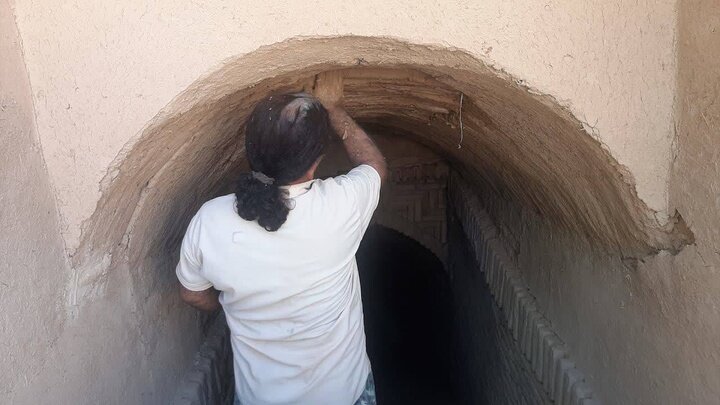Centuries-old qanats in Ardakan undergo restoration

TEHRAN – Restoration and rehabilitation work has begun on a series of historic qanats located in the old urban fabric of Ardakan, Yazd province, as part of a preservation initiative for the region’s ancient water infrastructure, local officials said.
The restoration program, announced on Sunday by cultural heritage authorities in Yazd, includes several interventions designed to preserve the structural integrity and traditional function of the qanats.
Major pillars of the restoration plan include disconnecting wastewater lines that have been illegally connected to the qanat paths, removing accumulated wastewater, trimming and reshaping the qanat tunnel walls, and reinforcing the vertical water access shafts.
The project also involves repairing staircases of the Qanats, along with pointing and plastering to improve both safety and durability. The initiative aims to prevent tunnel collapses, maintain the original underground architecture, and support potential tourism uses of the qanat infrastructure.
Qanats are ancient subterranean water channels that transport groundwater from aquifers to the surface using gravity. The system, developed over 2,000 years ago, supports agriculture and settlement in Iran’s arid regions. Ardakan, a historical city in central Iran, relies heavily on this traditional water distribution method.
Each qanat typically includes a gently sloped tunnel extending for kilometers underground, with vertical shafts constructed at regular intervals to remove excavated material and allow airflow. These shafts are visible from the surface and often mark the line of the qanat.
The water drawn from the underground aquifer is distributed through a network of open-air channels and is shared by multiple stakeholders through a long-standing communal management system. Many qanats also include auxiliary structures such as reservoirs, public bathhouses, rest areas, and watermills.
AM
